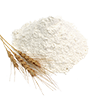Sign In Chef

By using our free meal planner (and the rest of spoonacular.com) you have to agree that you and only you are responsible for anything that happens to you because of something you have read on this site or have bought/cooked/eaten because of this site. After all, the only person who controls what you put in your mouth is you, right?
Spoonacular is a recipe search engine that sources recipes from across the web. We do our best to find recipes suitable for many diets — whether vegetarian, vegan, gluten free, dairy free, etc. — but we cannot guarantee that a recipe's ingredients are safe for your diet. Always read ingredient lists from the original source (follow the link from the "Instructions" field) in case an ingredient has been incorrectly extracted from the original source or has been labeled incorrectly in any way. Moreover, it is important that you always read the labels on every product you buy to see if the product could cause an allergic reaction or if it conflicts with your personal or religious beliefs. If you are still not sure after reading the label, contact the manufacturer.
We also attempt to estimate the cost and calculate the nutritional information for the recipes found on our site. Again, we cannot guarantee the accuracy of this information. Additionally, our nutrition visualizer that suggests that you limit sodium, sugar, etc., and get enough protein, vitamins, and minerals is not intended as medical advice. Similarly, our health tips are based on articles we have read from various sources across the web, and are not based on any medical training. The team behind spoonacular does not possess any medical qualifications and the information may be found to be incorrect or out of date based on future research. If you need help planning your diet or determining which foods (and recipes) are safe for you, contact a registered dietitian, allergist, or another medical professional.
Spoonacular is not responsible for any adverse effects or damages that occur because of your use of the website or any information it provides (e.g. after cooking/consuming a recipe on spoonacular.com or on any of the sites we link to, after reading information from articles or shared via social media, etc.)
×$4.19 per serving

1 likes

Ready in 2 hours and 35 minutes

Spoonacular Score: 85%
Slow Braised Red Wine Lamb Stew with Moroccan Spices could be just the dairy free recipe you've been looking for. One portion of this dish contains roughly 39g of protein, 14g of fat, and a total of 601 calories. For $4.19 per serving, you get a main course that serves 4. Autumn will be even more special with this recipe. This recipe from Foodista requires baby carrots, wine, alhambra merguez seasoning, and garlic. Not a lot of people made this recipe, and 1 would say it hit the spot. From preparation to the plate, this recipe takes around 2 hours and 35 minutes. Taking all factors into account, this recipe earns a spoonacular score of 87%, which is great. Similar recipes include Red Wine Braised Lamb Shanks, Red Wine Braised Leg Of Lamb, and Red Wine-Braised Lamb Shanks.
Cabernet Sauvignon, Chablis, and Malbec are great choices for Stew. Full-bodied red wines like malbec and cabernet sauvignon are the perfect accompaniment for beef stew. Fish stew probably calls for a white wine, such as chablis. You could try Eden Canyon Vineyards "ESTATE" Cabernet Sauvignon. Reviewers quite like it with a 5 out of 5 star rating and a price of about 49 dollars per bottle.
 BRONZE MEDAL - 2011 San Francisco Chronicle Wine Competition. The 2007 Estate Cabernet Sauvignon is an auspicious vintage. The growing season produced the thickest and most flavorful skins we'd ever grown. Potent and complex, her raven complexion reveals a feminine style, medium body, and dense flavors of fresh blueberries, chocolate, currant, cinnamon, violets, and cloves. This vintage aged for 24 months in French oak barrels. Our small production, handcrafted wines are produced with minimal intervention, reflecting our vineyard's full influence in the winemaking process. Our estate vineyard produces low yield and high-quality grapes that are crushed and de-stemmed within minutes of handpicking. We produce about 2,000 cases a year of consistent, balanced, low sulfites, vegan, gluten-free, non-GMO, and nature friendly wines.
BRONZE MEDAL - 2011 San Francisco Chronicle Wine Competition. The 2007 Estate Cabernet Sauvignon is an auspicious vintage. The growing season produced the thickest and most flavorful skins we'd ever grown. Potent and complex, her raven complexion reveals a feminine style, medium body, and dense flavors of fresh blueberries, chocolate, currant, cinnamon, violets, and cloves. This vintage aged for 24 months in French oak barrels. Our small production, handcrafted wines are produced with minimal intervention, reflecting our vineyard's full influence in the winemaking process. Our estate vineyard produces low yield and high-quality grapes that are crushed and de-stemmed within minutes of handpicking. We produce about 2,000 cases a year of consistent, balanced, low sulfites, vegan, gluten-free, non-GMO, and nature friendly wines.
» Get this wine on Amazon.com














































Read the detailed instructions on Foodista.com – The Cooking Encyclopedia Everyone Can Edit